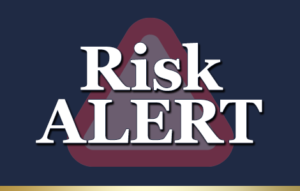

 Apple’s AirTags are marketed as “an easy way to keep track of your stuff.” But the trackers have also been linked to criminal activity such as stalking and car theft.
Apple’s AirTags are marketed as “an easy way to keep track of your stuff.” But the trackers have also been linked to criminal activity such as stalking and car theft.
The discs are meant to be attached to personal items like keys, wallets and backpacks. Apple’s location-tracking network, called “Find My,” then tracks how far away the tags are and displays a map with their locations.
But in recent months, people have posted on TikTok, Reddit and Twitter about finding unknown AirTags on their cars and in their belongings. There is growing concern that the devices may be used for stalking, which privacy groups predicted could happen when Apple introduced the devices in April 2021.
“Apple automatically turned every iOS device into part of the network that AirTags use to report the location of an AirTag,” Eva Galperin, a cybersecurity director at the Electronic Frontier Foundation, told the New York Times. She noted that while similar trackers exist, “the network that Apple has access to is larger and more powerful than that used by the other trackers. It’s more powerful for tracking and more dangerous for stalking.”
Galperin studies so-called stalkerware—apps, software programs and devices that allow another person to secretly monitor and record information about your phone activity, such as monitoring keystrokes or tracking locations.
Source: “Are Apple AirTags Being Used to Track People and Steal Cars?” New York Times, Dec. 30, 2021
***
The Environmental Protection Agency has expanded its list of hazardous air pollutants for the first time in over 30 years, adding 1-bromopropane, a powerful solvent.
The designation allows the EPA to set limits on emissions of the solvent, valued by dry cleaners, auto shops and other businesses for its ability to treat dirty fabrics and greasy metal parts.
Congress established the original roster of more than 180 hazardous air pollutants when it strengthened the Clean Air Act more than 30 years ago. Lawmakers granted the EPA broad authority to add any chemical to the list—which includes asbestos, mercury and lead—if it is “reasonably” anticipated to harm humans or the environment.
“Putting it on the list was supposed to be easy,” Adam M. Finkel, who used to direct the health standards programs at the Occupational Safety and Health Administration and warned of the dangers of 1-bromopropane 20 years ago, told the Washington Post. “It’s a toxic air pollutant, so it belongs on the list of toxic air pollutants.”
The EPA is planning to propose a “regulatory infrastructure” for adding the chemical to the hazardous pollutant list this year, EPA spokesman Nick Conger said. It aims to finalize that rule by early 2023.
Public health advocates hope the move opens the door for adding more chemicals to the list.
Source: “For the first time in over 30 years, the EPA adds to its list of hazardous air pollutants,” Washington Post, Jan. 5, 2022